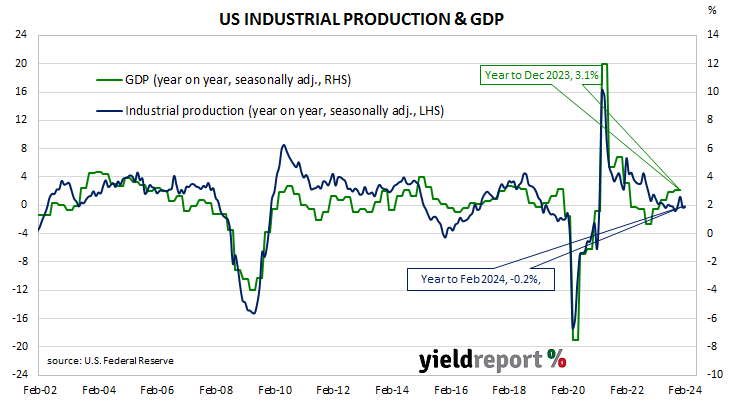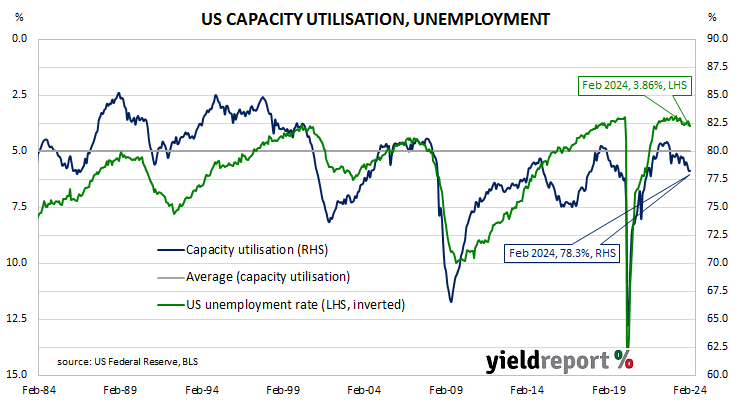US industrial output up 0.1% in February, slightly higher than expected; down 0.2% over past 12 months; US Treasury yields rise; rate-cut expectations soften; capacity utilisation rate unchanged at 78.3%, below long-term average.
The Federal Reserve’s industrial production (IP) index measures real output from manufacturing, mining, electricity and gas company facilities located in the United States. These sectors are thought to be sensitive to consumer demand and so some leading indicators of GDP use industrial production figures as a component. US production collapsed through March and April of 2020 before recovering the ground lost over the fifteen months to July 2021. However, production growth has largely stagnated since early 2022.
According to the Federal Reserve, US industrial production expanded by 0.1% on a seasonally adjusted basis in February. The increase was slightly higher than the flat result which had been generally expected and in contrast with January’s 0.5% contraction after it was revised down from -0.1%. On an annual basis the contraction rate slowed from January’s revised figure of 0.3% to 0.2%.
The figures were released on the same day as the University of Michigan’s latest consumer sentiment report and US Treasury yields rose moderately. By the close of business, the 2-year Treasury yield had gained 4bps to 4.73%, the 10-year yield had added 2bps to 4.31% while the 30-year yield finished unchanged at 4.44%.
In terms of US Fed policy, expectations of a lower federal funds rate in the next 12 months softened, although several cuts are still factored in. At the close of business, contracts implied the effective federal funds rate would average 5.33% in March, in line with the current spot rate, 5.325% in April and 5.305% in May. However, September contracts implied a 4.99% rate, 34bps less than the current rate, and March 2025 contracts implied 4.42%, 91bps less than the current rate.
The same report includes capacity utilisation figures which are generally accepted as an indicator of future investment expenditure and/or inflationary pressures. Capacity usage hit a high for the last business cycle in early 2019 before it began a downtrend which ended with April 2020’s multi-decade low of 64.2%. February’s reading remained unchanged at 78.3%, somewhat below the long-term average of 80.1%.
While the US utilisation rate’s correlation with the US jobless rate is solid, it is not as high as the comparable correlation in Australia.



